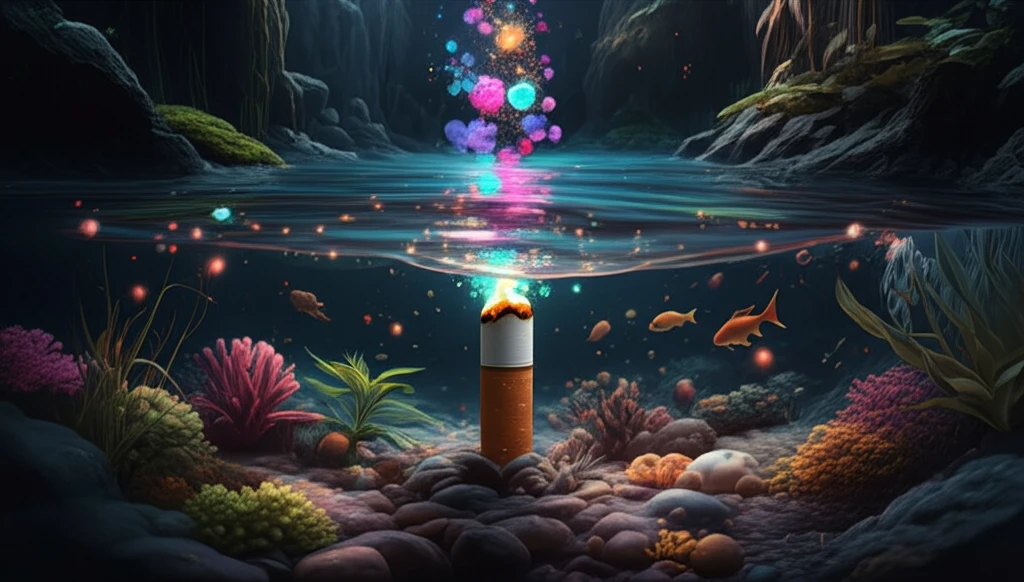
From Trash to Treasure: Turning Cigarette Butts into Valuable Resources
"Discover how scientists are converting toxic cigarette waste into fluorescent carbon dots for various high-tech applications."
Cigarette butts (CBs) are one of the most pervasive forms of litter globally, posing a significant environmental challenge. Washed into drains, these butts make their way to lakes, rivers, and oceans and are primarily composed of cellulose acetate, which degrades very slowly, leading to persistent pollution and toxic leachates that harm aquatic life.
Recognizing the urgent need for effective waste management, researchers are exploring innovative ways to transform CBs into valuable resources. Instead of conventional disposal methods like landfilling or incineration, which are unsustainable and costly, scientists are developing methods to convert cigarette waste into high-demand products.
One of the recent studies focuses on converting toxic cigarette butts into highly fluorescent N,S-codoped carbon dots (CBCDs) using a simple hydrothermal approach. These carbon dots exhibit bright and stable fluorescence and can be used in various applications such as fluorescent films, security inks, bioimaging, sensing, and logic gate operations, offering a promising solution to mitigate pollution while creating valuable materials.
The Science Behind the Transformation: How Cigarette Butts Become Carbon Dots

The key to this transformation lies in a hydrothermal method that converts the cellulose acetate fibers of cigarette butts into water-soluble carbon dots. Concentrated sulfuric acid plays a crucial role in this process, acting as a strong acid to hydrolyze cellulose acetate into cellulose and further convert it into hydrophilic cellulose nanoparticles.
- Cutting cigarette butts into small pieces and sonicating them in sulfuric acid.
- Heating the dispersion in a Teflon-lined stainless-steel autoclave at 180°C for 6 hours.
- Centrifuging the solution to remove large particles and neutralizing it with Na2CO3.
- Purifying the solution by dialysis and obtaining CBCDs powder through freeze-drying.
The Future is Bright: Endless Possibilities for Carbon Dots
By converting toxic cigarette butts into valuable resources, this research provides a sustainable approach to waste management and pollution reduction. The resulting carbon dots offer versatile applications in various fields, paving the way for a cleaner, more sustainable future. As research continues, these innovative solutions hold the potential to transform waste into valuable assets, contributing to a circular economy and a healthier planet.
